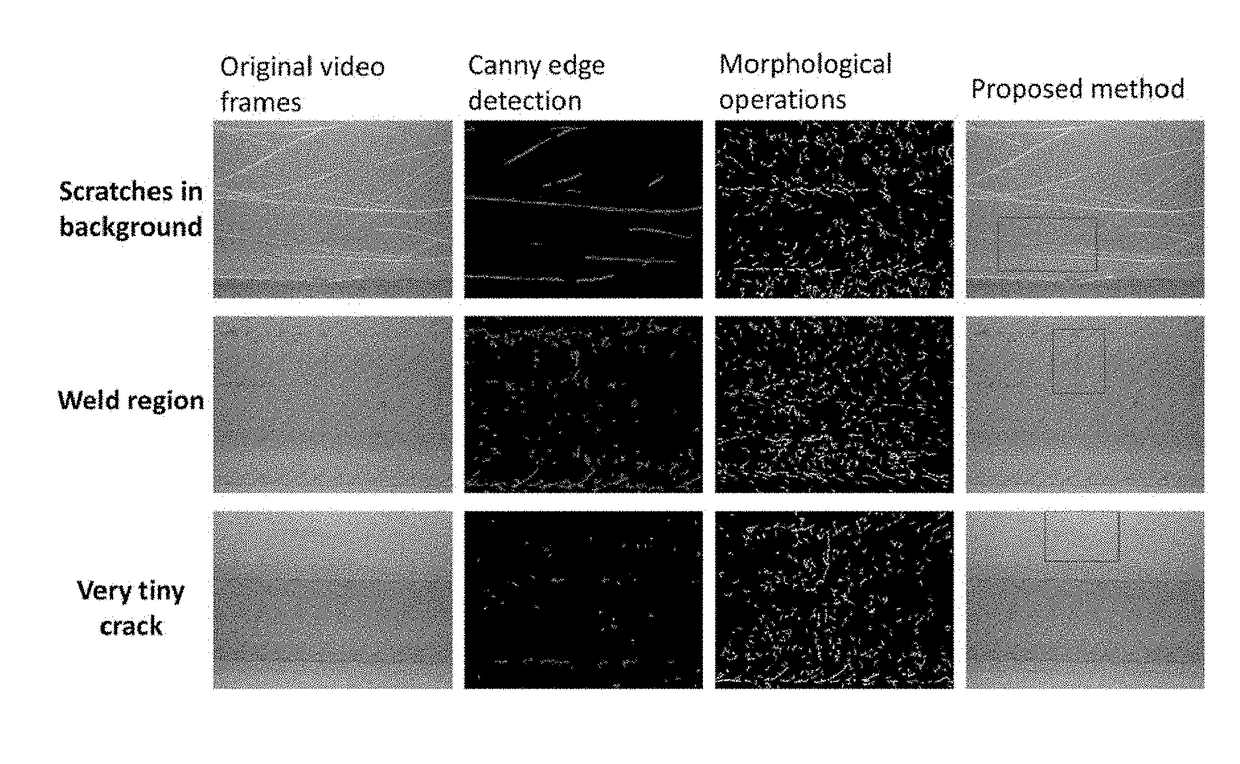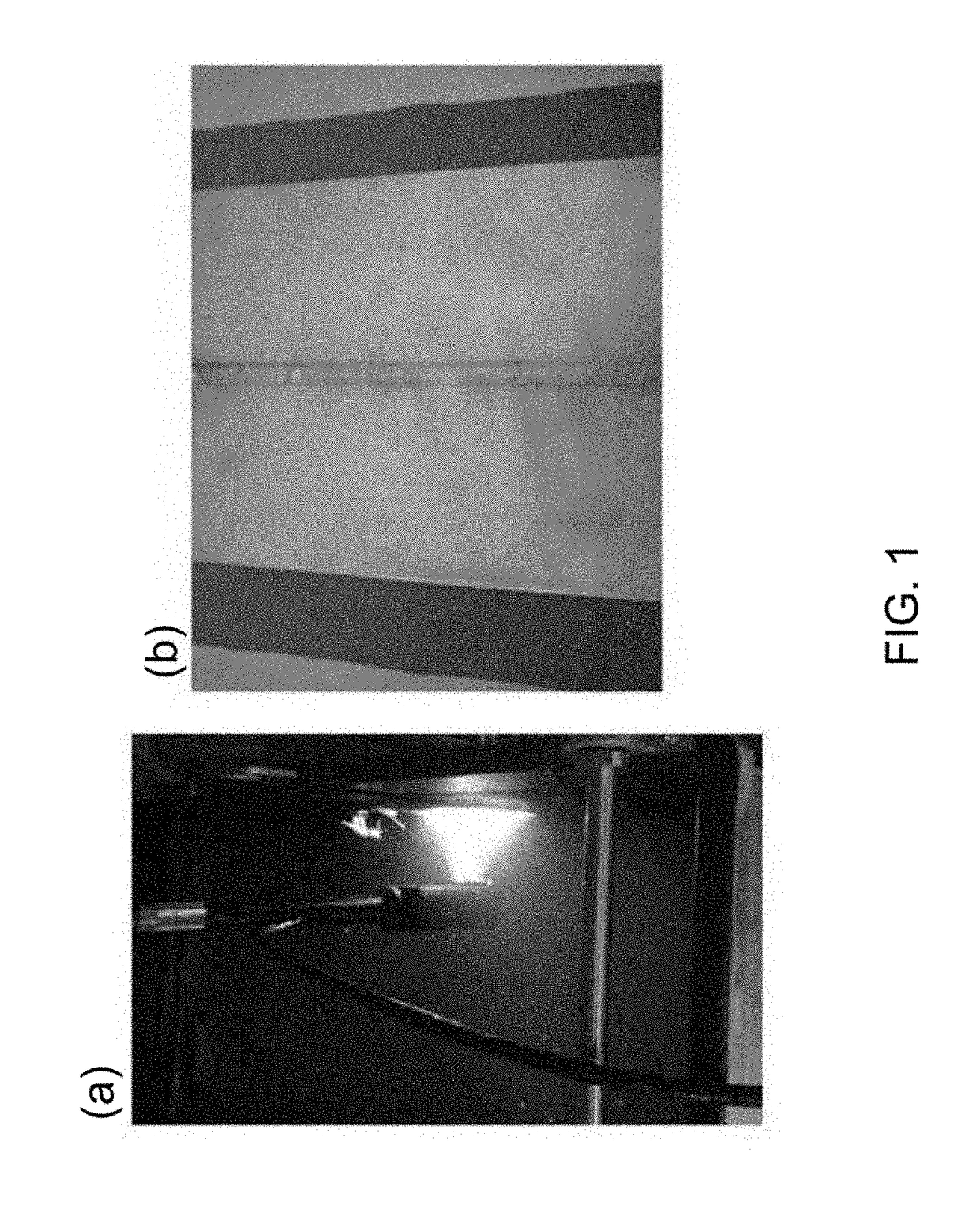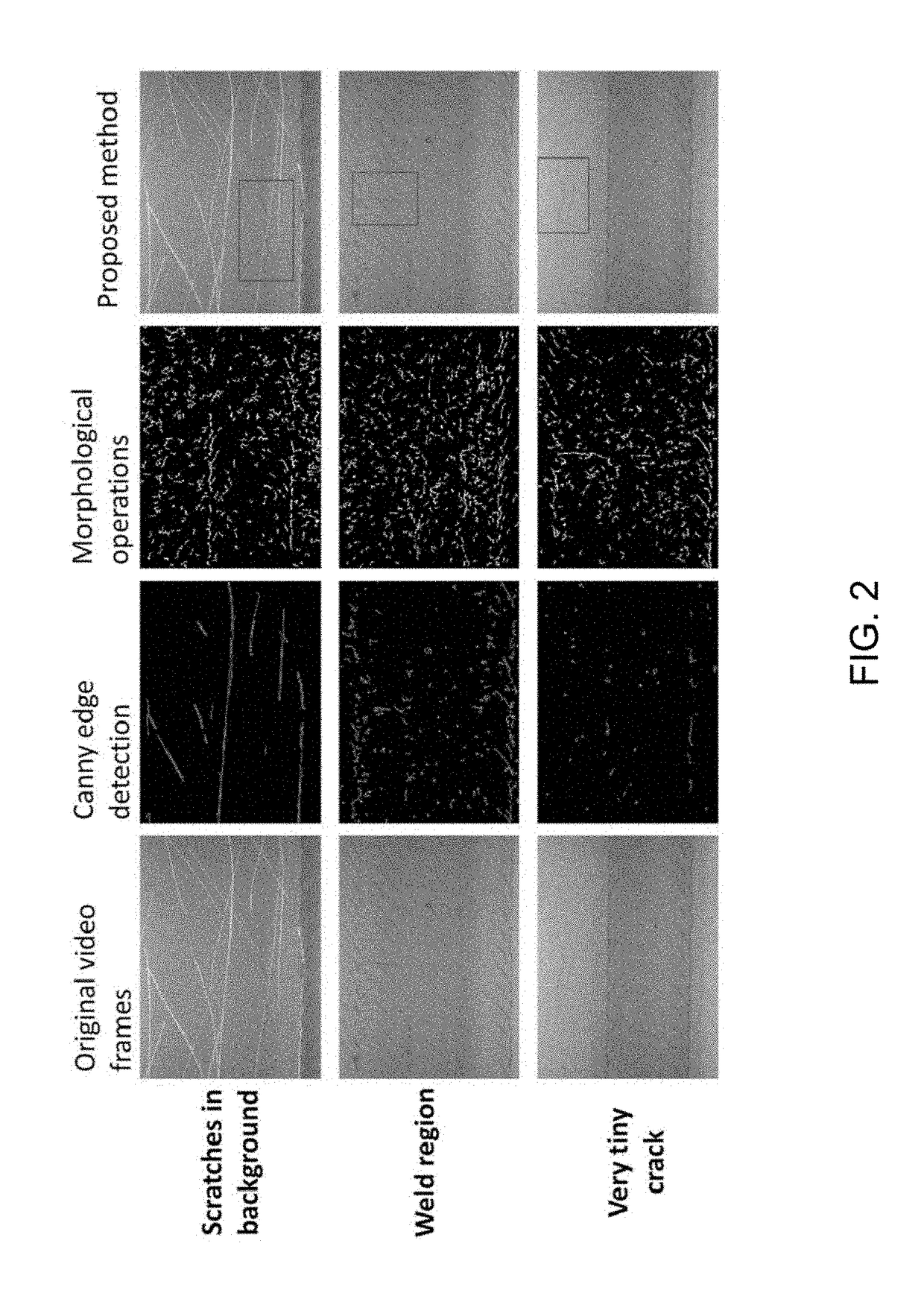Methods and systems for crack detection
a crack detection and crack technology, applied in the field of remote inspection techniques, can solve the problems of unfavorable direct manual inspection of reactors, unfavorable remote visual inspection, and inability to perform direct inspection of reactor components
- Summary
- Abstract
- Description
- Claims
- Application Information
AI Technical Summary
Benefits of technology
Problems solved by technology
Method used
Image
Examples
first embodiment
[0073]The LBP / SVM-based systems and methods disclosed above use LBP, SVM, and data fusion with a Bayesian inference to detect cracks from videos with an 85% hit rate. In a second nonlimiting embodiment, systems and methods instead use Naïve Bayes with convolutional neural network (CNN) and spatial-temporal clustering (referred to herein as NB / CNN-based systems and methods) for detecting cracks from videos. In general, the systems and methods use a CNN architecture which detects crack patches much more accurately than the LBP / SVM-based systems and methods of the first embodiment, uses a clustering procedure that accords with the spatial-temporal coherence of cracks in videos, and uses a Naïve Bayes classifier based on the statistics which preferably discards false-positives.
[0074]FIG. 17 schematically represents steps in the NB-CNN method. “Video Motion Estimation” estimates the motion vector between every successive frame pair. “CNN Crack Patch Detection” applies the CNN to detect c...
second embodiment
[0103]To evaluate the second embodiment and CNN's performance for crack patch detection, all of the 147,344 crack and 149,460 non-crack image patches described above were used for validation. It took 80% the image patches to train and 20% to validate the CNN and generate the receiver operating characteristic (ROC) curves. FIG. 25 demonstrates the ROC curves of the CNN and the LBP-SVM where the true positive rate (TPR) is the number of true positives (crack patches) divided by the total number of positives. The false positive rate (FPR) is defined in a similar manner. A classifier with low FPR (e.g., smaller than 1%) is practical to detect crack patches without having too many false-positives during a frame scanning. FIG. 25 indicates that the CNN reaches high TPR much faster than the LBP-SVM. With 0.1% FPR, the CNN achieves 99.9% TPR while the LBP-SVM has only 96.2% TPR. This means when the CNN miss-detects 0.1% the crack patches, the LBP-SVM might miss-detect 3.8%, that is, 38 time...
PUM
 Login to View More
Login to View More Abstract
Description
Claims
Application Information
 Login to View More
Login to View More - R&D
- Intellectual Property
- Life Sciences
- Materials
- Tech Scout
- Unparalleled Data Quality
- Higher Quality Content
- 60% Fewer Hallucinations
Browse by: Latest US Patents, China's latest patents, Technical Efficacy Thesaurus, Application Domain, Technology Topic, Popular Technical Reports.
© 2025 PatSnap. All rights reserved.Legal|Privacy policy|Modern Slavery Act Transparency Statement|Sitemap|About US| Contact US: help@patsnap.com



